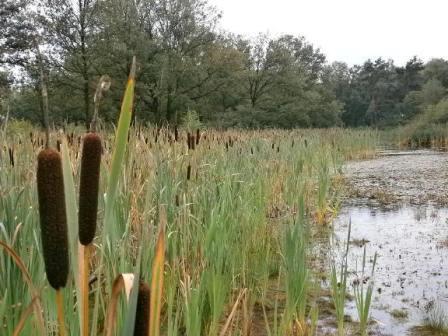Roots are a good source of starch. It is of little use to collect them as digging roots should cost more energy than it delivers. Collecting happens best in the fall when the plant has stored its maximum reserves. Some edible roots are to cook before use:
Cattail (Typha latifolia): common on the waterside.
Burdock (Arctium lappa): harvesting the big roots in the fall.
Chicory (Cichorium intybus): both leaf and root is edible. Family Chicory. Roasted root is also used as coffee.
Thistle (Carduus): the roots of all the species are edible. (Some species are protected).
Rhizome of Bog bean (Menyanthes trifoliata).
 Reed (Phragmites australis) rhizome and young shoots. (And also cultivated roots as carrots, parsnips, beetroot, salsify, and (root) tubers as celeriac, (sweet) potato, peanut.)
Reed (Phragmites australis) rhizome and young shoots. (And also cultivated roots as carrots, parsnips, beetroot, salsify, and (root) tubers as celeriac, (sweet) potato, peanut.)
The roots of couch grass (Elymus repens) and silverweed (Potentilla anserina) are also edible.
General : if you do not trust it or you do not know it for sure, do not eat it! Always go for good washing and / or brief immersion in boiling water to prevent parasites.
Tips on plants that are not edible.
- Plants with a milky juice are strongly discouraged (except the dandelion).
- Brightly colored plants are often harmful to the body.
- Vegetables and fruits with 5 segments.
- To eat, leaves may not be old or faded. Withering they make a lot of hydrocyanic acid. This can be fatal in large quantities.
- Ferns are edible but break B vitamins from the body. The taste is bitter.
